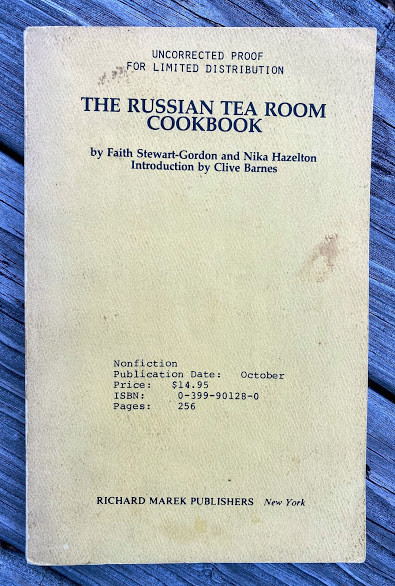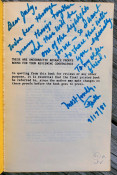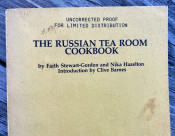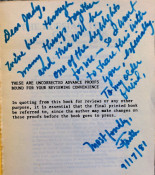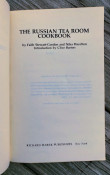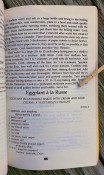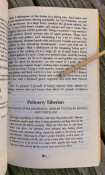NEW YORK Landmark. - Faith STEWART-GORDON, Nika HAZELTON.
The Russian Tea Room Cookbook … Introduction by Clive Barnes. New York: Richard Marek Publishers, 1981. Small octavo (8 ¼ x 5 3/8ins; 209 x 137mm). [i-xii], 1-189[-192]. Yellow paper wrappers. Provenance: author (Faith Stewart-Gordon) presentation inscription to ‘Dear Judy’, dated ‘9/17/81 – the book was published in October 1981.
An inscribed copy of the ‘Uncorrected Proof / for limited distribution’: a cookbook, but also a memento of a New York City ‘landmark’.“ The Russian Tea Room was opened in 1927, by former members of the Russian Imperial Ballet, as a gathering place for Russian expatriates and became famous as a gathering place for those in the entertainment industry. The founder is often considered to be Polish-born Jacob Zysman, but in that year, a corporation directory lists Albertina Rasch as the president, and her name appears along with Russian Art Chocolate and Russian Tea Room, in early photographs of the shopfront at 145 W. 57th St. In 1929, the business moved across the street to its present location, which at that time was an Italianate brownstone, built in 1875 by German immigrant John F. Pupke, a tea and coffee merchant, whose son later moved the large clan to Long Island, seeking a more relaxed lifestyle.
By 1933, the Siberian émigré Alexander Maeef was running the Russian Tea Room and was the main personality associated with the restaurant for the next fifteen years.
In 1955, the restaurant was purchased by Sidney Kaye, who, in 1967, left the restaurant to his widow, Faith Stewart-Gordon.
In 1981, Harry B. Macklowe, the developer of the Metropolitan Tower, planned a large office tower that would have included not only his own site at the Metropolitan Tower, but also the restaurant's and the lot on which Carnegie Hall Tower was erected. There was an agreement with Carnegie Hall about their lot, but Stewart-Gordon, who owned the lot dividing the project, refused to sell. Macklowe also offered to buy the air rights only and to give room for her restaurant inside the new tower building, but Stewart-Gordon declined. No matter what she was offered, Stewart-Gordon refused to sell the lot. During the planning of the Carnegie Hall Tower at 152 W. 57th St., on the other side of the Russian Tea Room, again Stewart-Gordon declined to sell its site or its air rights. The result is the narrow twenty-foot gap, separating the Metropolitan and Carnegie Hall towers.” (Wikipedia).
- Binding Condition: See images
- Overall Condition: Excellent
- Size: 8 ¼ x 5 3/8in; 209 x 137mm
- Sold By: Shadowrock Rare Books
- Contact Person: Adam Langlands
- Country: United States
- Email: [email protected]
- Telephone: 001-860-248-1547
- Preferred Payment Methods: Paypal, US$ checks and wire transfers, major credit cards through paypal
- Trade Associations: AA Approved


